With theories ranging from an avalanche to katabatic wind, researchers may have finally solved the Dyatlov Pass Incident that left nine Soviet hikers dead in February 1959.
In January 1959, a 23-year-old hiker named Igor Alekseyevich Dyatlov led a journey to reach the peak of Otorten, a mountain in the Northern Urals of Soviet Russia. The young man brought a team of eight experienced hikers, many from the Ural Polytechnical Institute, along with him for the adventure.
Before he left, Dyatlov had told his sports club that he and his team would send them a telegram as soon as they returned. But that telegram was never sent and none of the hikers of the so-called Dyatlov Pass Incident were ever seen alive again.

Public DomainThe hikers of the Dyatlov Pass Incident make their way through the snow on February 1, 1959 — the day they met their mysterious fate.
When their bodies were found in the coming weeks, their strange and gruesome injuries left investigators baffled and repulsed. Some were missing eyes, another was missing her tongue, and many were struck by a force comparable to that of a speeding car — but no one could make sense of it.
The Soviet government closed the Dyatlov Pass case quickly and offered only thin explanations saying that the hikers died due to hypothermia because they were inexperienced and that maybe something like an avalanche was at fault.
But with that “explanation” clearing up almost none of the lingering questions, amateur sleuths have been puzzling over the mystery of the Dyatlov Pass Incident for the last 60 years.
Since then, the Russian government reopened the case in 2019 before quickly closing it once more. And two years later, two Swiss scientists claimed to have solved the Dyatlov Pass mystery with their own theory about a special kind of avalanche.
However, questions remain and we still don’t know exactly what happened on that snowy mountainside all those years ago.
The Doomed Hikers Enter The Dyatlov Pass
Based on what was recovered from cameras and diaries discovered at the site of the hikers’ deaths, investigators were able to piece together that on February 1, the team began to make their way through the then-unnamed pass leading to Otorten.
As they pushed through the hostile climate toward the base of the mountain, they were hit with snowstorms that ripped through the narrow pass. Decreasing visibility caused the team to lose their sense of direction, and instead of moving toward Otorten, they accidentally deviated west and found themselves on the slope of a nearby mountain.
This mountain is known as Kholat Syakhl, meaning “Dead Mountain” in the language of the indigenous Mansi people of the region.
To avoid losing the altitude they had gained, or perhaps simply because the team wanted to practice camping on a mountain slope before their ascent of Otorten, Dyatlov called for camp to be made there.
It was on this solitary mountainside that all nine hikers of the Dyatlov Pass Incident would meet their demise.
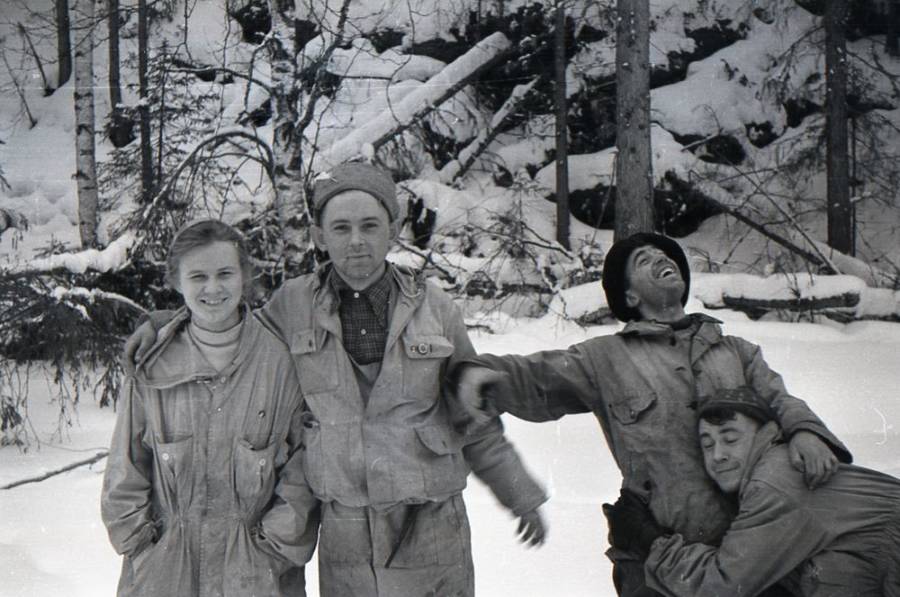
Krivonischenko’s CameraDubinina, Krivonischenko, Thibeaux-Brignolles, and Slobodin having a good time.
When February 20 rolled around and there was still no communication from the hikers, a search party was mounted.
The volunteer rescue force that trekked through the Dyatlov Pass found the campsite but no hikers — so military and police investigators were sent in to determine what had happened to the missing team.
When they arrived on the mountain, the investigators weren’t hopeful. Though the group was made up of experienced hikers, the route they had chosen was remarkably difficult, and accidents on these tricky mountain trails were a real danger. With the hikers having been missing for so long, investigators expected to find an open-and-shut case of a horrific accident on treacherous ground.
They were only partially correct. They found bodies — yet the state in which the bodies were found only raised more questions. Starting on February 26, the discoveries of the bodies opened up the true mystery of the Dyatlov Pass Incident that continues to this day.
Investigators At The Dyatlov Pass Stumble Onto A Shocking Scene

Wikimedia CommonsA view of the tent as the rescuers found it on February 26, 1959.
When investigators arrived at the campsite, the first thing they noticed was that the tent had been cut open in a way that soon proved to be from the inside and that it was nearly destroyed. Meanwhile, most of the team’s belongings — including several pairs of shoes — had been left there at camp.
They then discovered eight or nine sets of footprints from the team, many of them clearly made by people with either nothing, socks, or a single shoe on their feet. These tracks led to the edge of the nearby woods, almost a mile away from the camp.
At the forest’s edge, under a large cedar, the investigators found the remains of a small fire and the first two bodies: Yuri Krivonischenko, 23, and Yuri Doroshenko, 21. Despite temperatures of −13 to −22°F on the night of their deaths, both men’s bodies were found shoeless and wearing only underwear.
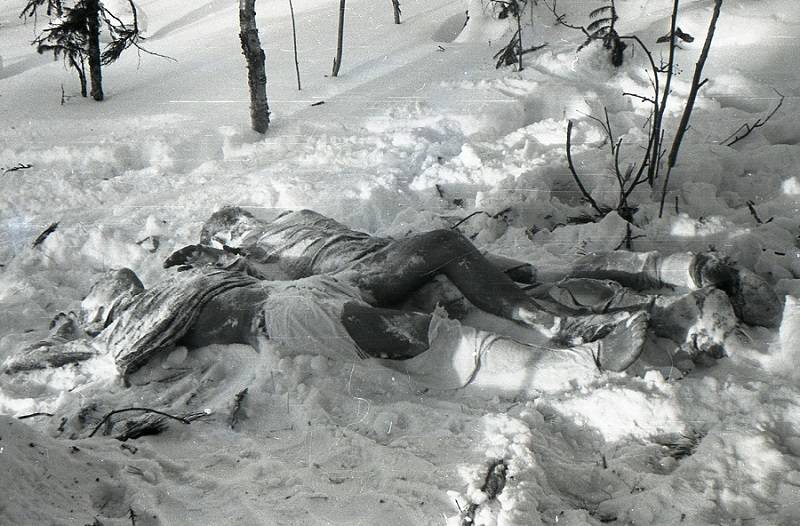
Russian National FilesThe bodies of Yuri Krivonischenko and Yuri Doroshenko.
They then found the next three bodies, those of Dyatlov, Zinaida Kolmogorova, 22, and Rustem Slobodin, 23, who died on their way back to the camp from the cedar tree. Images of their corpses remain some of the most horrifying photos captured during the Dyatlov Pass investigation:

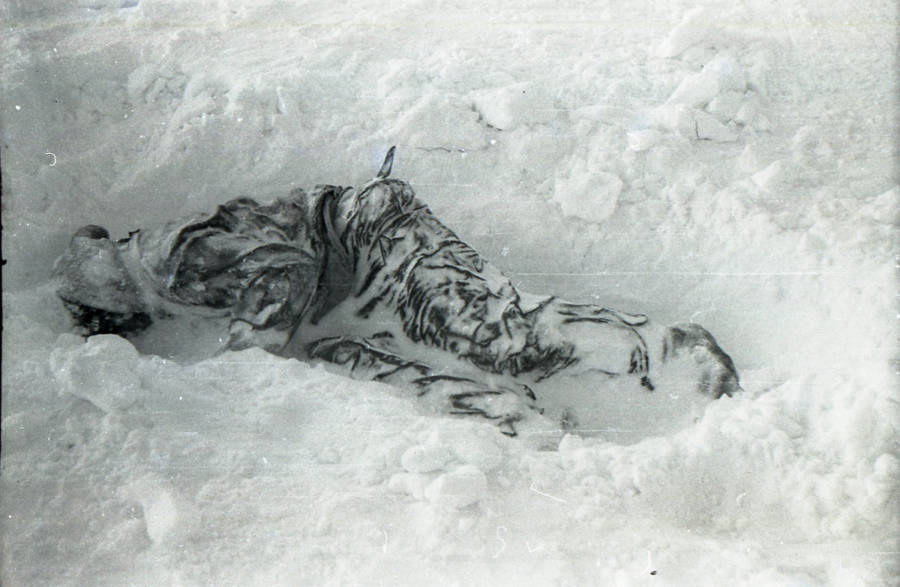

Russian National ArchivesTop to bottom: The bodies of Dyatlov, Kolmogorova, and Slobodin.
While the circumstances were odd, investigators found that the causes of death were clear: All the hikers, they said, had perished from hypothermia. Their bodies showed no indication of severe external damage beyond what had been inflicted by the cold.
However, this didn’t explain why Doroshenko was “brown-purple” in complexion or why he had gray foam coming from his right cheek and gray liquid coming from his mouth. Furthermore, this didn’t explain why the hands of the two hikers under the cedar were scraped away and the branches above them were torn down as if the two men had tried desperately to seek shelter from something or someone in the tree.
Meanwhile, Slobodin had head injuries consistent with someone falling and hitting their head over and over again and Kolmogorova had a baton-shaped bruise on her side. These two hikers as well as the others found by this point were also generally under-dressed and wearing some of each other’s clothes, only supporting the idea that they’d fled suddenly and without adequate preparation into the freezing night, despite being experienced hikers.
It wasn’t until the other four bodies were found two months later that the mystery deepened even more.
An Even Grislier Scene Emerges In The Dyatlov Den
The remaining hikers were discovered buried under the snow in a ravine 75 meters deeper into the woods than the cedar — known as the Dyatlov Pass den — and their bodies told even more gruesome stories than those of the other members of the group.
Nikolai Thibeaux-Brignolles, 23, suffered significant skull damage in the moments before his death while Lyudmila Dubinina, 20, and Semyon Zolotaryov, 38, had major chest fractures that could only have been caused by an immense force comparable to that of a car crash.
In the most gruesome part of the Dyatlov Pass Incident, Dubinina was missing her tongue, eyes, part of her lips, as well as facial tissue and a fragment of her skull bone.
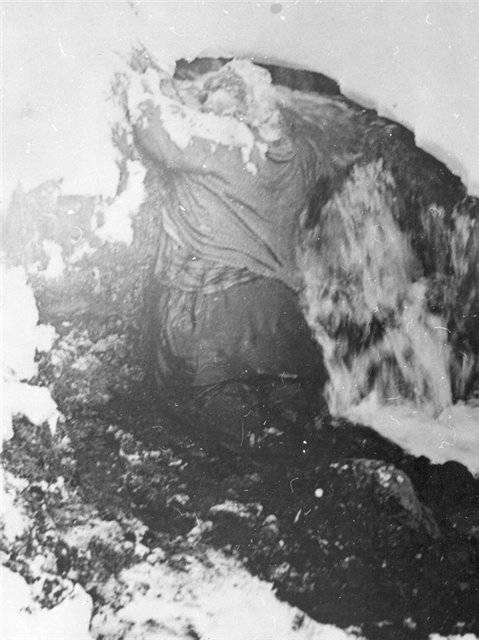
Russian National ArchivesThe body of Lyudmila Dubinina on her knees, with her face and chest pressed to the rock.
They also found the body of Alexander Kolevatov, 24, in the same location but without the same kind of severe wounds.
This second group of bodies suggested that the hikers had died at distinctly different times because they appeared to have been making use of the clothes of the people who died before them.
Dubinina’s foot was wrapped in a piece of Krivonischenko’s wool pants, and Zolotaryov was found in Dubinina’s faux fur coat and hat — suggesting he had taken them from her after she had died, just as she had taken clothes from Krivonischenko earlier.
Perhaps most mysterious of all was that the clothes of both Kolevatov and Dubinina showed evidence of being radioactive. Due to evidence like this, even with more bodies found, the mystery of the Dyatlov Pass Incident only grew more baffling.
Experts Struggle To Make Sense Of The Evidence
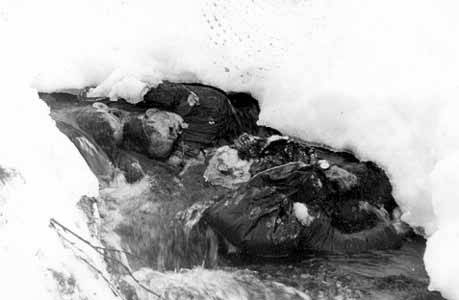
Russian National ArchivesThe bodies of Kolevatov, Zolotaryov, and Thibeaux-Brignolles in the ravine.
The Soviet government closed the case quickly and gave only vague causes of death and speculated that the hikers’ own incompetence may have caused their demises or that a natural disaster was the culprit.
Early on, many Soviets also suspected that the hikers’ deaths were the result of an ambush by the local Mansi tribesmen. A sudden attack would account for the way the hikers fled their tents, their disarray, and the damage done to the second group of bodies.
But that explanation fizzled quickly; the Mansi people were largely peaceful, and the evidence in the Dyatlov Pass didn’t much support violent human conflict.
For one, the damage done to the hikers’ bodies exceeded the blunt force trauma one human could inflict on another. There was also no evidence of any footprints on the mountain beyond those made by the hikers themselves.
Investigators then conceived of a swift, violent avalanche. The sound of snow collapsing, an early warning of the deluge to come, would have frightened the hikers out of their tents in a state of undress and sent them sprinting for the tree line. An avalanche would also have been powerful enough to inflict the injuries that killed the second group of hikers.
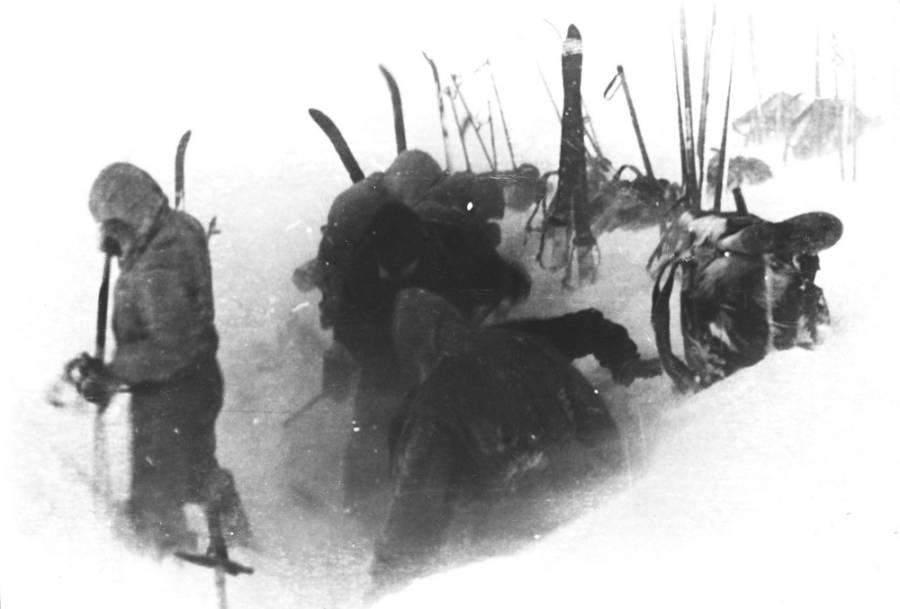
Russian National ArchivesThe last known photo of the nine hikers alive, taken at the camp on Kholat Syakhl.
But the physical evidence of an avalanche just wasn’t there and locals familiar with the terrain later said that such a natural disaster simply wouldn’t have made sense in the Dyatlov Pass.
There was also the fact that when investigators found the bodies, they noted no evidence that an avalanche had occurred any time recently in the region. There was no damage to the tree line, and searchers observed no debris.
Moreover, no avalanches had been recorded at that site before and nor have there been any since.
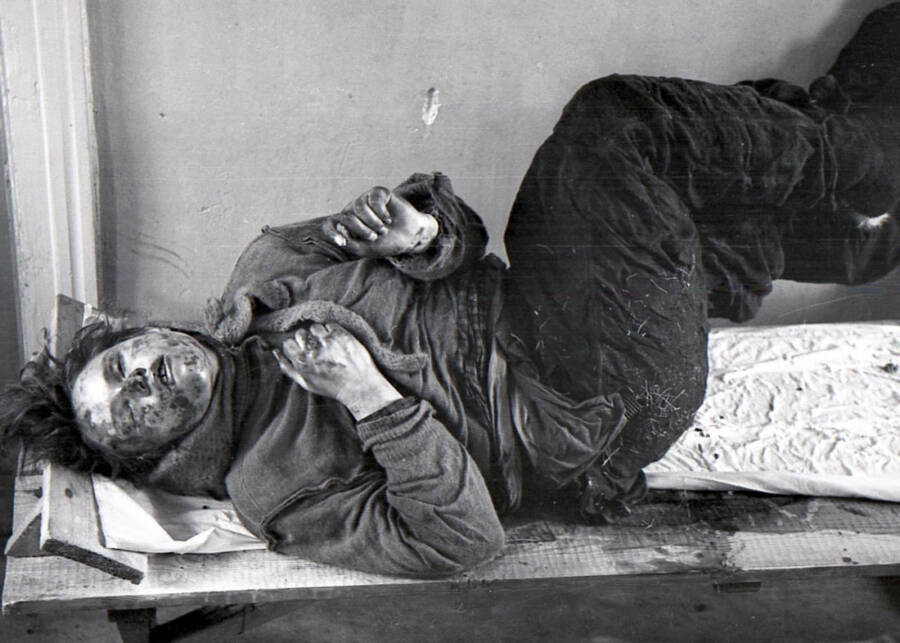
Public DomainThe body of Kolmogorova after being removed from the snow.
Furthermore, would the experienced hikers have made camp in a spot that was vulnerable to an avalanche?
The avalanche hypothesis was characteristic of most of the theories put forward in the early days of the mystery: It offered a quick, superficially plausible solution to some aspects of the puzzle but utterly failed to account for others.
Theories About What Caused The Dyatlov Pass Incident

Public DomainThe bodies of Kolevatov and Zolotaryov.
With official theories leaving lots unexplained, many alternative explanations for the Dyatlov Pass Incident have been put forward in the six decades since. While many of these are highly elaborate, some are decidedly concrete and straightforward.
Some tried to explain the hikers’ strange behavior and lack of clothing with an in-depth look at the effects of hypothermia. Irrational thinking and behavior is a common early sign of hypothermia, and as a victim approaches death, they may paradoxically perceive themselves to be overheating — causing them to remove their clothes.
The trauma to the second group of bodies, in this version of events, is caused by a stumbling plunge over the edge of a ravine.
Yet hypothermia doesn’t explain why the hikers left their warm tents in a panic for the frigid world outside in the first place.
Other investigators began to test the theory that the deaths were the result of some argument among the group that got out of hand, possibly related to a romantic encounter (there was a history of dating between several of the members) that could explain some of the lack of clothes. But people who knew the ski group said they were largely harmonious.
Moreover, the Dyatlov hikers would have been no more able to inflict the damage to their compatriots than the Mansi — the force involved in some of the deaths was, again, greater than that which any human could inflict.
The Dyatlov Mystery Takes A Turn Toward The Supernatural
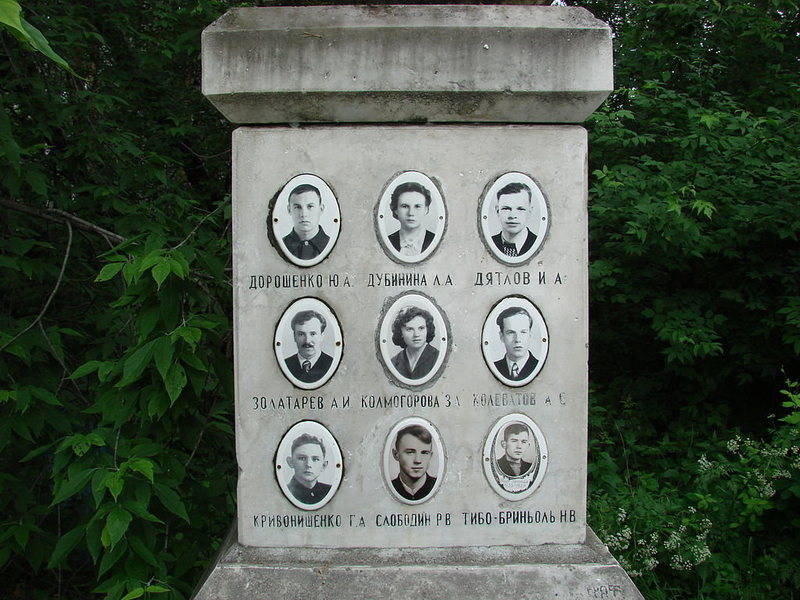
Wikimedia CommonsMemorial erected for the hikers.
With humans effectively ruled out as the culprits behind the Dyatlov Pass Incident — though there are theories that the KGB or murderous prison escapees were at fault — some began to posit nonhuman assailants. Some began to claim that the hikers were killed by a menk, a kind of Russian yeti, to account for the immense force and power necessary to cause the injuries to three of the hikers.
This theory is popular among those who focus on the damage to Dubinina’s face. While most explain her missing tissue by positing a visit from small scavengers or perhaps decay resulting from her partial submersion in a watery under-snow stream, menk proponents see a more sinister predator at work.
Other sleuths point to the reports of small amounts of radiation detected on some of the bodies, leading to wild theories that the hikers had been killed by some sort of secret radioactive weapon after stumbling into secret government testing. Those who favor this idea stress the strange appearance of the bodies at their funerals; the corpses had a slightly orange, withered cast.
But had radiation been the cause of death, more than modest levels would have registered when the bodies were examined. The corpses’ orange hue isn’t surprising given the frigid conditions in which they sat for weeks — they were partially mummified in the cold.
The secret weapon explanation is popular because it is partially supported by the testimony of another hiking group, one camping 50 kilometers from the Dyatlov Pass team on the same night. This other group spoke of strange orange orbs floating in the sky around Kholat Syakhl — a sight proponents of this theory interpret as distant explosions.
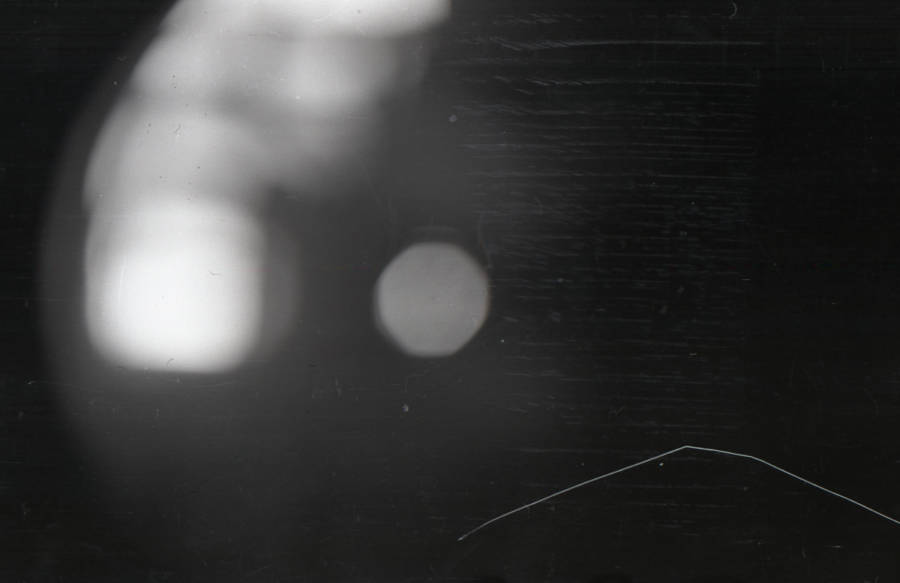
Krivonischenko’s CameraA photo from Yuri Krivonischenko’s camera that some say shows the glowing spheres.
The hypothesis goes that the sound of the weapon drove the hikers from their tents in a panic. Half-clothed, the first group died of hypothermia while attempting to take shelter from the blasts by waiting near the tree line.
The second group, having seen the first group freeze, determined to go back for their belongings but fell victim to hypothermia too, while the third group got caught in a fresh blast further into the forest and died from their injuries.
Lev Ivanov, the chief investigator of the Dyatlov Pass Incident, said, “I suspected at the time and am almost sure now that these bright flying spheres had a direct connection to the group’s death” when he was interviewed by a small Kazakh newspaper in 1990. Censorship and secrecy in the USSR forced him to abandon this line of inquiry.
Other explanations include drug testing that caused violent behavior in the hikers and an unusual weather event known as infrasound, caused by particular wind patterns that can lead to panic attacks in humans because the low-frequency sound waves create a kind of earthquake inside the body.
In the end, the hikers’ deaths were officially attributed to “a compelling natural force,” and the case was closed.
The Solution To The Dyatlov Pass Mystery?
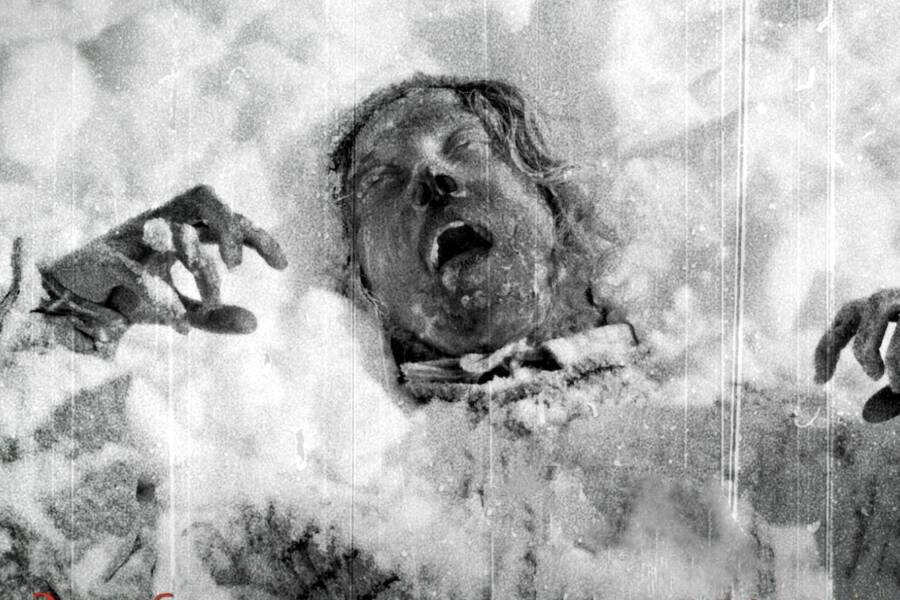
Public DomainA frozen corpse peeks through the snow in the aftermath of the Dyatlov Pass Incident.
Finally, in 2019, Russian officials reopened the case for a new investigation.
This time, however, officials said they would only consider three theories: an avalanche, a snow slab, or a hurricane. And the case was once again closed with only a vague conclusion that no criminal activity was afoot.
Investigators then said in July 2020 that the hikers died of hypothermia after an avalanche of similar force pushed them out of their tent and into the cold.
The avalanche theory continued to gain traction when two researchers based in Switzerland — Alexander Puzrin, a professor of geotechnical engineering at ETH Zurich, and Johan Gaume, head of the Snow and Avalanche Simulation Laboratory at Ecole Polytechnique Fédérale de Lausanne — published a study in the journal Communications Earth & Environment in 2021.
Their report claimed that a large snow slab combined with the particular slope of the Dyatlov Pass could have created a unique calamity that caused these tragic deaths.
In 2022, Puzrin and Gaume then captured footage at the Dyatlov Pass further illustrating how just this sort of avalanche may have been responsible. And with that, many began to believe that the Dyatlov Pass Incident had finally been solved.
Still, many remain unconvinced and the mystery remains unofficially unsolved.
What is official is that the mountainside in question was named the Dyatlov Pass in honor of the lost expedition and a monument to the nine hikers was erected in the Mikhajlov Cemetery at Yekaterinburg. There lay the only people who will ever know the full truth of what happened that night in the Dyatlov Pass.
Enjoy this article on the mysterious Dyatlov Pass Incident? Next, dig into the History Uncovered podcast’s investigation into the Dyatlov Pass mystery, and read up on the second group of hikers who vanished at the Dyatlov Pass in 2021. Then, read up on more of history’s most disturbing horror stories.





